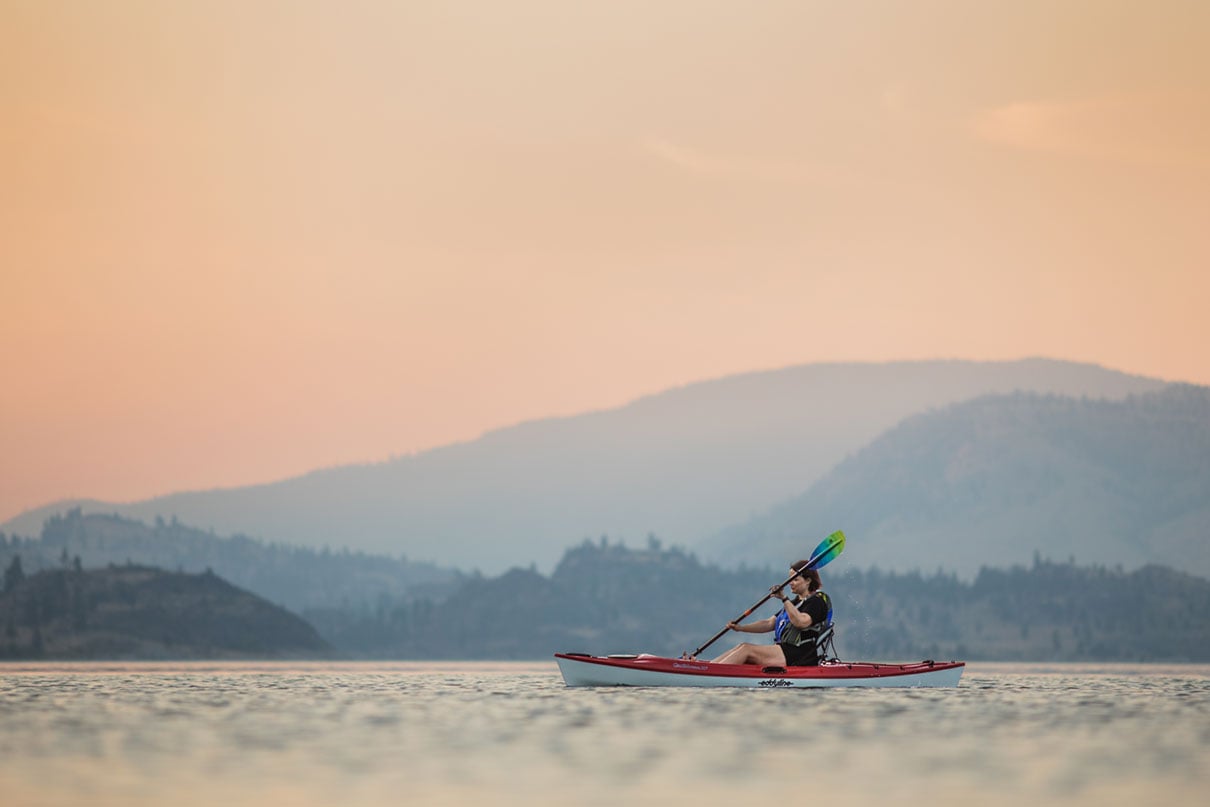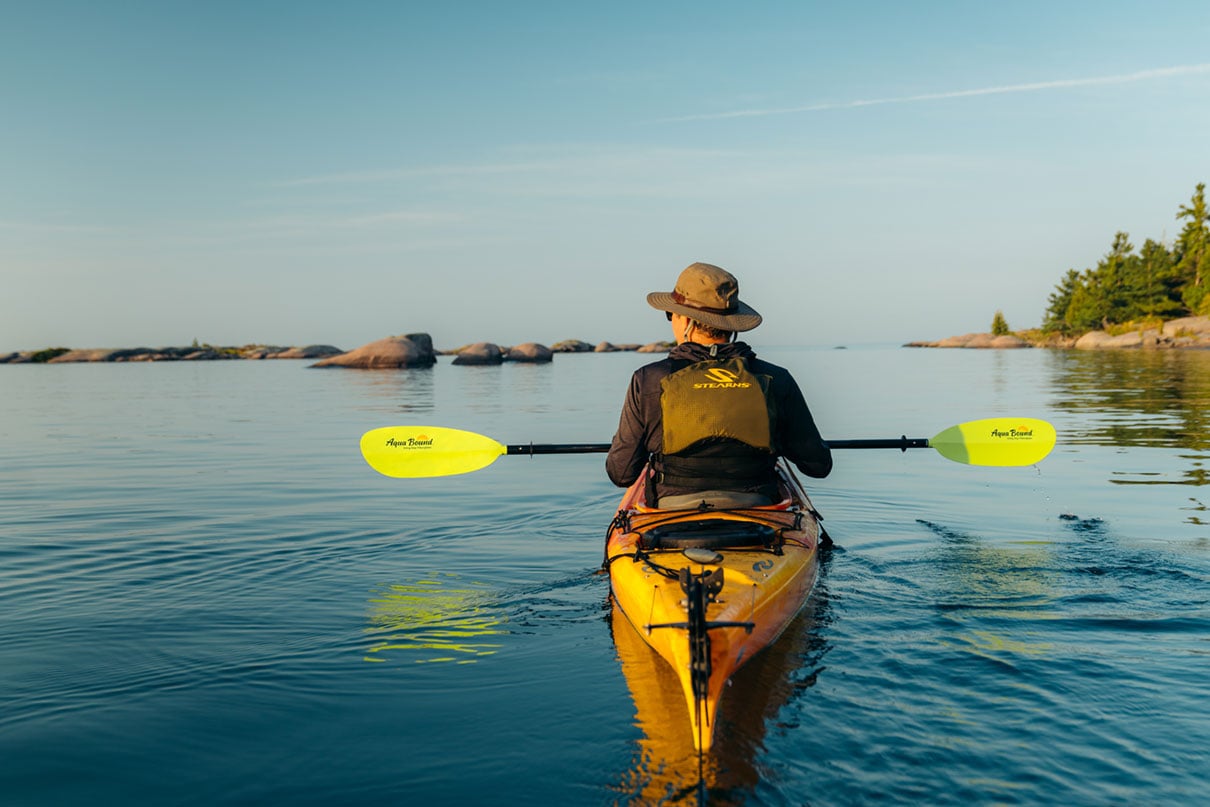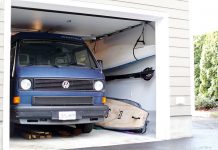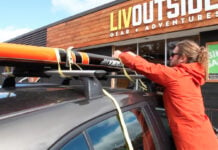Kayaks spend much more time in storage than they do on the water. But for most paddlers, storage is an afterthought rather than part of the purchase process. Proper kayak storage is essential—it protects your kayak from the elements and extends the boat’s life. Proper storage also saves space, making room for even more kayaks.
The most important part of storing your kayak is ensuring it’s well supported off the ground, with its weight evenly distributed. For a typical sea kayak, this means support near the bulkheads. Check the manufacturer’s suggestions for the best storage position for your kayak, and use padded cradles or wide straps to avoid pressure points.
There are many storage solutions available, from DIY ideas to premium racks costing hundreds of dollars and everything in between. There’s no one best storage method, only what works for your location, convenience and budget.
7 best kayak storage solutions

1 Wall hangers
Wall-mounted cradles are a versatile way to store your kayak. The cradles can mount to any vertical surface that can support the kayak’s weight—inside the garage, along an exterior wall or even on a sturdy fence. Wall hangers are shaped like a capital letter U with one side mounted to a flat surface.
This method is easily customizable, so your kayak is getting support where it needs it most—under the bulkheads for sea kayaks and about a third of the way in from each end for shorter recreational kayaks. The hangers’ height is up to you and depends on how many kayaks you want to mount and what you want to store underneath.
Remember, the higher the kayak, the more effort to hoist the boat into position. Some wall-mounted racks allow for stacking two or three kayaks.
Our pick: Suspenz Deluxe Rack
The Suspenz Deluxe Rack is a great example of a wall-mounted kayak cradle perfect for long-term storage. Pivot arms make it easy for one person to load their kayak into the rack, and the suspension strap system alleviates pressure points on the hull of your kayak, better protecting it from oil-canning.
Buy from:

2 Hanging straps
Hanging straps work similarly to wall mounted cradles. Straps are typically nylon and two or more inches wide.
Straps are inexpensive but trickier to load the boat onto solo and must be mounted to a stud as they’ll be bearing the kayak’s full weight for long periods.
Our pick: Suspenz DLX Strap Storage System
The Suspenz DLX Strap Storage System uses foam-padded straps and stainless steel hooks to secure your kayak to the wall. This system is space-saving and protects your kayak, but can be difficult to load solo.
Buy from:

3 Freestanding racks
Freestanding racks come in a variety of sizes, offering storage for two to six or more kayaks. This is a popular option for those with multiple kayaks and available floor space. Store-bought freestanding racks are durable and cost a few hundred dollars.
For a budget kayak storage solution, build a DIY rack with some basic carpentry skills and a bundle of 2×4’s. PVC and plumbing pipes are also popular materials for DIY freestanding racks. While these racks typically take up the most space of the options listed here, with wheels or casters installed you can move them around.
Our Pick: Teal Triangle G-Watersport 3 Levels
Looking for a quicker kayak rack fix? Cut the extra work of DIY and check out the freestanding G-Watersport 3 Levels from Teal Triangle for a sturdy, easy assembly option for long-term kayak storage both inside and outside. This freestanding kayak rack is available in several sizes, with the largest size holding up to eight boats.
Buy from:

4 Hoists
With great height comes more space-saving possibilities. A hoist system installed on garage rafters uses a pulley system to pull the kayak up, allowing you to park your vehicle or store other items beneath. Hoists should use wide straps or a sling to support the kayak’s hull.
Measure the height of your garage before committing to this storage method, and factor in vehicle clearance if needed, plus the depth of your kayak and hoist system. A hoist system may also fit under a building overhang or a second-story deck.
Our pick: Malone Kayak Hammock Deluxe Hoist System
The Malone Kayak Hammock Deluxe Hoist System uses independent pulley control, selflocking brake and steel construction to make it a great option for anyone looking to store their kayak using a hoist.
Buy from:

5 Sawhorse or Boat Stands
The sawhorse storage method is cheap and straightforward. From repurposed construction sawhorses to nylon camp stools, a bow and stern support can often be cobbled together from items you already have.
Several manufacturers make durable and lightweight, folding sawhorse-style racks, which can accompany you to the put-in or the front lawn for boat maintenance. You can use these anywhere: the garage, backyard or alongside the house.
Our pick: Suspenz Heavy Duty Boat Stands
While it’s fairly easy to make your own sawhorses, you can also find kayak sawhorse options online like the Suspenz Heavy Duty Boat Stands. One of the biggest benefits of the heavy duty sawhorses is that the canvas sling supports the boat without creating pressure points on the kayak. Traditional sawhorses have thinner supports, which can build pressure in specific places on the hull of a kayak leading to damage if used like this long term.
Buy from:
6 Pool noodles
The simple pool noodle is a choice many use to keep their kayaks just off the ground. Available for a buck or two, throw these colorful foam tubes on the ground, drop the kayak on top, and away you go.
The pool noodle is a cheap and temporary solution but not ideal for long-term storage as the noodle will compress and before long, your kayak will be resting on the ground. Plus, it won’t get the kayak out from underfoot.
DIY kayak storage solution using EMT Conduit and a pool noodle
While this is a bit of a project, check out how with EMT Conduit, a pool noodle, and a PVC pipe cap YouTuber Aksmaniyak builds a kayak rack at home.
7 Off-site storage
If you live in an urban setting with limited storage available, don’t own a vehicle, or simply want waterside access, then storage at a local kayak club or marina might be the best option. Some clubs offer just a rack, while others offer free parking, showers, security and more.
Off-site kayak storage can be convenient, but expensive. A club near me offers outdoor storage without any frills for $400 a year, plus the cost of cable, lock and insurance. It’s not cheap, but some may find it pays itself off in convenience. Bonus: the annual fee usually drops for each subsequent boat stored.
Where to store your kayak: indoor vs. outdoor storage
If you have enough room to store your kayak inside, thank your lucky stars. Indoor storage keeps your kayak out of the sun’s UV rays, which can degrade and discolor hulls over time. It also limits exposure to precipitation and extreme temperatures, and offers a better chance of keeping critters from ransacking your outfitting.
Take extra precautions if storing your kayak outside. To avoid UV damage, try to keep it in the shade as much as possible, cover it with a kayak cover, or rig a tarp roof over your rack. A simple spray on and wipe off of UV protectant will offer extra peace of mind.
Insects, spiders, snakes, rodents and other small animals are known to make homes in kayak cockpits. Fit your cockpit with a cover to keep visitors out but be sure the cockpit is dry before covering it to avoid mold and mildew. Depending on visibility, you may want to add a cable and lock to keep your kayak from disappearing in the night.
Before putting your kayak away for any length of time, ensure it’s clean and dry. A simple rinse and dry is likely enough. However, if you paddle in either saltwater or muddy water, wipe down with a mild soap and water solution.
How not to store your kayak
Whatever you do, do not store your kayak directly on the ground. This can damage the hull over time. Storing your kayak on a flat surface for a long period of time or even in excess heat or the sun can cause the hull of your kayak to oil can, or flatten, greatly impacting the performance of the boat.
Resist the temptation to store your kayak vertically, resting on its bow or stern, for the same reason.
Feature Photo: Kevin Light









